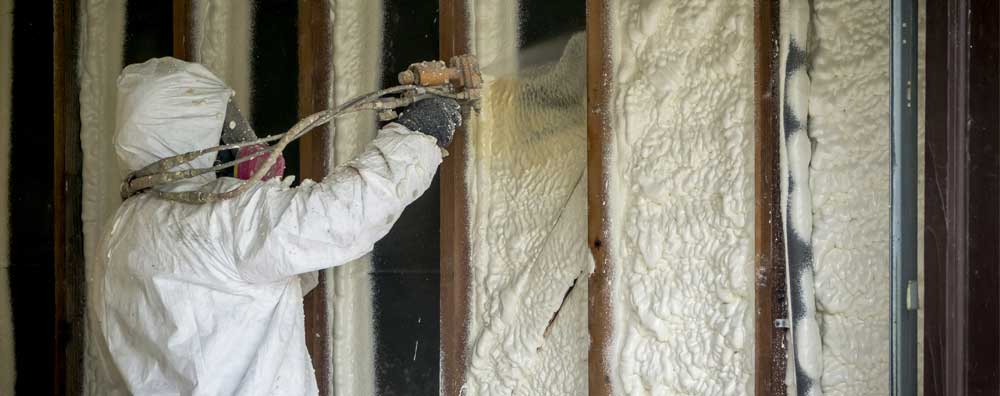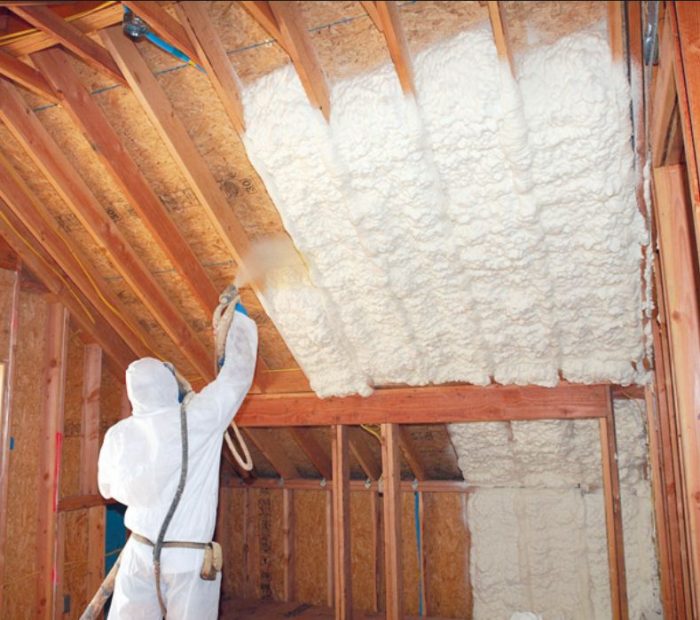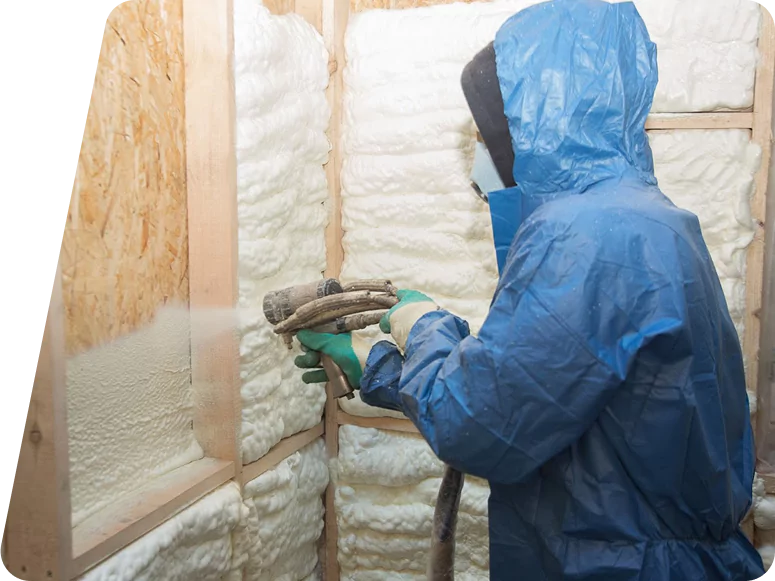
If you’re planning to re-insulate your home, you’ve probably come across spray foam insulation as an option. If your home is older, you’re probably already somewhat aware of the lower R-value insulation found in older houses like yours.
If the insulation in your home is older than 20 years old, its effectiveness has deteriorated. If your house was built before 1984, it most likely requires more insulation.
Before you begin, you should have a good knowledge of what R-value is and how it compares to spray foam insulation.
You’re in the right place!
We will discuss how insulation works and how R-values affect your energy costs.

HOW DOES INSULATION WORK?
Knowing how insulation works mean understanding heat flow. Heat flow comprises three principles: conduction, convection, and radiation.
Conduction, Convection, and Radiation
Conduction is how heat flows through materials. Think about how a metal spoon in a hot cup of soup conducts heat through the handle and to your hand. Convection is the way heat circulates through gases and liquids.
Convection is why warmer, lighter air in your home rises and why denser, cooler air sinks.
Radiant heat goes in a straight line. It heats whatever is in its path that’s solid and can absorb the energy.

Insulation Slows Heat Flow
Most insulation materials slow down the conductive heat flow. It slows the convective heat flow as well, to a lesser extent. No matter which way heat moves, it flows warmer to cooler until the temperature evens out.
During winter, heat moves from your heated living spaces to your unheated attic, garage, basement, and eventually outside. Heat flow can also move through ceilings, floors, and walls via radiation.
During the summer, heat moves in the opposite direction, from outside to your home’s interior. The proper installation provides resistance to the unwanted flow of heat.
HOW R-VALUES FIT IN
The industry measures insulation’s resistance to conductive heat flow by rating it according to its thermal resistance or R-value. The higher the R-value is, the better the foam insulates. A high R-value, then, means higher effectiveness.
The R-value depends on the type of insulation, density, and thickness. For some types of insulation, the R-value also depends on aging, temperature, and moisture.
Location Affects R-Value
How well insulation resists heat flow depends on how and where you install the insulation. For example, if the insulation has been packed within the space, it will not retain the full R-value.
The R-value of an entire ceiling or wall varies from the insulation’ itself’s-value. That’s because heat flows more smoothly through joists and studs via thermal bridging.
Different R-Values for Different Regions
The amount of insulation and R-value you need depends on your type of cooling and heating operation, climate, and the part of your house that is insulated.
Most retail insulation places will have a map or chart indicating which R-value is recommended for your climate. The United States is split into regions or zones. Energy Star has a recommended R-value for each zone.
This is cross-matched to the area securing the insulation. For example, Energy Star suggests R-30 for a roof in the southern United States, R-38 for the middle of the country, and R-49 for the northern area of the country.
SPRAY FOAM INSULATION R-VALUES.
Amongst all of the popular types of insulation currently used by the industry, spray foam insulation features the highest R-value per inch. It’s a popular choice for both residential and commercial construction projects. Spray foam insulation has many benefits when used correctly in any project.
Spray foam also reduces air leaks better than other insulation types. It fills spaces easily and completely, no matter the shape of the area. This means it’s better at reducing thermal loss through both conduction AND convection.
SPRAY FOAM INSULATION COMES IN TWO TYPES, OPEN-CELL, AND CLOSED-CELL.
Open-Cell Spray Foam Insulation
Open-cell spray foam has a low density, which makes it vapor permeable. You’ll find it used for ceilings, walls, and roofs. A 3-in.-thick layer of open-cell spray foam has a permeance grade of 16.
Of course, this means that if used to make a modified, unvented attic in a cold climate, contractors should cover the inner face of the foam with a vapor retarder. They spray the foam after it cures with vapor-retarding paint.
Open-cell foam uses carbon dioxide or water as the blowing agent. Some are partly made from bio-based raw materials such as soybean oil (rather than petrochemicals).
Open-cell spray foam absorbs and holds water. It has a lower R-value per inch than closed-cell foam and is vapor-permeable. The R-value is R-3.5 to R-3.6 per inch, so filling a 2×4 cavity yields about an R-13.
Closed-Cell Spray Foam Insulation
Closed-cell spray foam has a far better R-value per inch than other, less effective insulations like cellulose, fiberglass, or even open-cell foam. All these have R-values ranging from R-3.2 to R-3.8 per inch. The R-value of closed-cell foam is R-6.5-7 per inch.
Contractors often use it to insulate under slabs, ceilings, walls, and roofs. It performs better than other insulation types. It presents an excellent air barrier, resists moisture, and retards vapor.
The closed-cell foam also adds to a ceiling, wall, or roof’s structural backbone because of its density and glue-like adherence. This makes it extremely useful for sealing air leaks at the attic side-of-partition top plate and rim joists.
SPRAY FOAM INSULATION R-VALUE
The higher the density of the foam, the higher the R-value per inch. Contrasted to how traditional insulation performs over time, commercial spray foam insulation has a far superior R-value.
Energy studies show that fiberglass insulation can lose up to 8% of its R-value before the builder even installs it. Over time it can lose even more. Spray foam insulation, on the other hand, is made on-site and implemented rapidly. The R-value remains consistent for the life of the product.
The higher R-value per inch, the easier it is to gain a high R-value in a small space. Spray foam can undoubtedly double the potential insulating value of a wall where only a few inches of space are open.
GET YOUR PROJECT STARTED
There’s never a better time than the present to make your home more energy-efficient, and spray foam insulation’s R-value is consistently more expensive than other types of insulation. We suggest you contact ArmorThane for a consultation with their spray foam pros and see if ArmorThane’s products are right for you.





